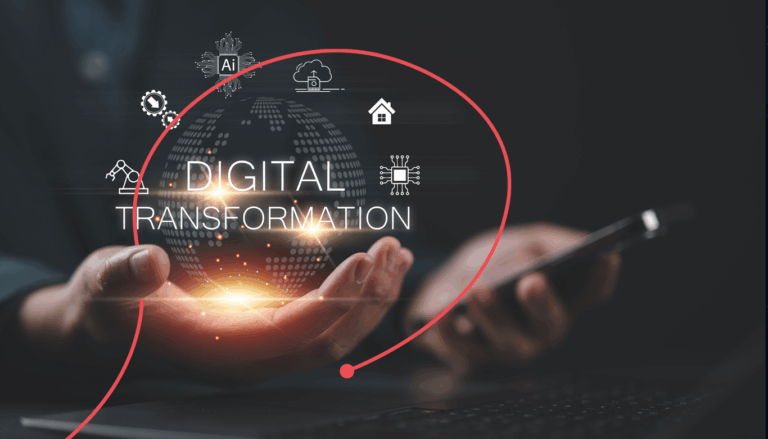Most SAP-using organizations will have 2027 circled on the calendar. That year will see the end of life for SAP ECC. As we approach the cut-off date, migrations from ECC to SAP S/4HANA to power an organization’s digital transformation are expected to boom. A digital and business transformation are necessary to thrive and survive in an increasingly digital world.
My first two blogs explored how organizations could embrace change and handle new processes to leverage an SAP S/4HANA migration. Over the following three blogs, I will take a deep dive into how your organization can make a smooth transition to SAP S/4HANA with less effort and reduced costs.
In this blog, you will learn:
- Why an SAP S/4HANA migration is not just a simple upgrade
- What you need to consider before migrating from ECC to SAP S/4HANA
- How to choose the appropriate approach for your digital transformation
- Why it’s essential to consider a tool that automates and enforces ABAP change workflows
The challenge of an SAP S/4HANA migration
An SAP S/4HANA migration represents a significant step forward for an organization from an operational and technical perspective.
The shift to SAP S/4HANA is filled with competing priorities and decisions, including:
- Complicated legacy landscapes
- High levels of customization
- Unclean master data
- The need to manage parallel (dual landscapes) as you build the new SAP S/4HANA environment

A digital transformation can be challenging – preparation is key
Even as you migrate to SAP S/4HANA, daily business operations continue. Managing a significant upgrade while maintaining your usual ECC workload of business as usual (BAU) changes and enhancement can be challenging. Yet it doesn’t have to be.
Preparation – the key to a successful digital transformation!
The success of a digital transformation begins at the preparation stage.
By failing to prepare, you are preparing to fail
Benjamin Franklin
Organizations realize the need for adequate preparation in delivering high-quality software rapidly. A recent SAPinsider report revealed that 37% of respondents specified poor requirements planning and roadmaps as the biggest challenge.
Appropriate preparation ensures that system software, hardware and even system operators are ready for future changes. From a technical transformation standpoint, large-scale migrations like SAP S/4HANA take time and thoughtful planning, which can help minimize the project’s overall complexity and cost.
A multi-step approach to your SAP S/4HANA migration
Every SAP landscape is unique. Organizations of all sizes across multiple industry sectors have built SAP environments using different combinations of different hardware, software, custom tweaks and business workflows.
So, no universal blueprint exists for preparing for an SAP S/4HANA migration. For some, it might involve consolidating systems, while others may focus on optimizing ABAP code or cleansing master data.
However, a common first step to preparing for an S/4HANA migration is:
Decide on a transition method
The size and complexity of your SAP landscape and how you want to deal with your existing data determine the roadmap for your migration journey. Yet, when considering a shift to SAP S/4HANA, there are three fundamental approaches to choose from:
- Greenfield: Stand-up brand-new SAP systems reimagining business processes and configurations from scratch.
- Brownfield (system conversion): A lift and shift; copying ECC environments and upgrading and adapting customizations. This technical upgrade utilizes many existing business processes.
- Bluefield (hybrid): Pick and choose what systems, data, customization, and business processes are migrated to SAP S/4HANA. Move business critical ECC functionality and map requirements to the SAP S/4HANA system. There is a possibility to develop new functionality in the upgraded environment.
What does this mean for the preparation phase of your digital transformation?
The method you choose impacts data, business processes, customizations built over time, custom code, quantifying changes, and synchronization between your legacy and SAP S/4HANA environments. For example, in a Brownfield approach, ECC 6.0 and Unicode are prerequisites for a shift to SAP S/4HANA. So, you may have to make some underlying changes to your legacy systems for a successful migration.
Organizations need a conversion plan that aligns with budgets, timelines, and ROI. Regardless of the approach to your SAP S/4HANA migration, you must consider key factors that can impact your transition’s success.
| Greenfield | Brownfield | Bluefield or Hybrid | |
| Outline | New system implementation starting from scratch | A system conversion of a legacy ECC system | Copy chosen system, retaining necessary data and custom code. Adapt for conversion or new SAP S/4HANA capabilities |
| Quantifying changes in preparation | Essential | Essential | Essential |
| Data | Unlikely to retain any data | All data in the system is retained and converted | Can choose to preserve business critical data in systems migrated to SAP S/4HANA |
| Business processes | Business processes and configurations built from scratch | Necessary changes only | Retain processes that work; customize others to suit business needs |
| Code merge insights | N/A | Yes – all custom code is retained with adjustments to suit SAP S/4HANA when required | Case by case – preserve critical code and adapt for SAP S/4HANA environment |
| Technical synchronization | N/A | Yes | Yes |
| Work order synchronization | Yes | Yes | Yes |
What else should you consider?
The preparation phase is an ideal time to assess the challenges and make the necessary adjustments to accelerate your SAP S/4HANA migration and minimize negative impact after go-live.
5 factors to consider in preparation for a digital transformation
- Code Simplification
- You should consider your plans for customized ABAP code when migrating to the new SAP environment. The shift to SAP S/4HANA allows organizations to take advantage of new standardized functionality previously unavailable in ECC and reduce their reliance on custom code. The preparation phase is an opportune time to make this adjustment to avoid rework post-cutover.
- However, there are many moving parts, so organizations must put in place processes or workflows to prevent the loss of functionality or unexpected behaviours. Doing this ensures you can avoid downgrades and have the confidence that all required functionalities are migrated.
- This is where a tool like Rev-Trac Platinum can prove invaluable. Rev-Trac Platinum is the SAP DevOps Platform that significantly reduces project risks by enforcing best practice delivery methods, developer safety checks and automated system synchronization features.
Here’s how it can work with Rev-Trac
When considering changes for synchronization, you can accept legacy code or leverage new capabilities. Associating a native S/4 capability with a Rev-Trac Request ensures it is accounted for and included in the shift to the new environment. A Rev-Trac Request is a group of transports, related documentation and approvals for managing an SAP change.
- Code Compatibility
- There will be cases where organizations need to bring over their custom code to the new platform to retain their competitive edge. Since developers typically created this code for ECC systems, it is often incompatible with SAP S/4HANA, presenting one of the biggest hurdles teams must manage during their digital transformation journey. Fortunately, there are practices teams can adopt to mitigate much of the effort to adjust the code for compatibility.
- It’s good practice to check the suitability of the code from inside your current ECC environment. Use the ABAP Test Cockpit (ATC) and install libraries to assess code for SAP S/4HANA suitability. Run all changes progressing across the current landscape (BAU changes, enhancements, etc.) through ATC. Where an incompatibility exists, you can attempt to resolve it immediately and advance it through testing and authorization requirements with the other changes.
Here’s how it can work with Rev-Trac
You can configure Rev-Trac Platinum to establish ATC checks as a fundamental pre-transformation check. Set up enforceable workflows to ensure all transports are checked for future suitability before releasing them from development. You can configure these processes from day one of the preparation phase, giving you confidence that your developers are already meeting the organization’s new coding expectations.
3. Cross Landscape Dependency
Many different landscapes make up your legacy SAP environment. In combination with your ABAP development changes and customized code, you need to consider changes to BW, BOBj, SRM and CRM, for example.
- Understanding the dependencies between your ECC system and the other landscapes is critical. When you migrate from ECC to SAP S/4HANA, you must accommodate cross-landscape dependency between the data integrations. Otherwise, you run the risk of parts of the application not working in the new environment. In addition, the different landscapes might be included in their own SAP S/4HANA transition, so an appropriate plan for managing multi-landscape transformations is crucial.
Here’s how it can work with Rev-Trac
With Rev-Trac, you can define dependencies the software automatically checks before transports are migrated to target systems. The dependencies can only be applied to transports attached to Rev-Trac Requests. However, they don’t have to be attached to the same request or relate to the same landscape. The request migrates to the target system if the dependencies are satisfied. Otherwise, you will get an error alert and a report that gives details of all the unsatisfied dependencies.
4. Onboarding the development team and change management process training
- An integration partner will often stand up your new SAP S/4HANA system. It would help if you had onboarding and training of your change management process solution during the preparation phase of the project. Your change management processes must be consistent and enforceable, and the SAP S/4HANA system should be built to your requirements in preserving data, customizations, etc. You don’t want an outsourced integration partner building your new environment and leaving you to ensure it works as expected.
5. SAP BTP
- Will you leverage SAP BTP to keep your core clean in the new SAP S/4HANA environment? Consider putting some of the functionality onto the BTP immediately.
The Bottom Line: Navigating your digital transformation
Shifting from SAP ECC allows organizations to enter the digital future. It’s not just an upgrade; it’s a path to digital transformation. Data preservation is a key consideration for a rapid and less risky transition to SAP S/4HANA. How do you want to utilize existing data, customizations, and business processes? The most advantageous time is during the preparation for your SAP S/4HANA journey.
You can, for example, make a data-specific decision about how you will transition to the new environment and rationalize and assess custom code for SAP S/4HANA suitability as you prepare for a digital transformation.
An advanced solution like Rev-Trac Platinum, the SAP DevOps Platform, is advantageous as you migrate to SAP S/4HANA. The capability to enforce change management and transport automation workflows and control the delivery of ABAP change smooths the transition and mitigates risk during the preparation phase.
In the next post, “How an automated retrofit approach accelerates your S/4HANA migration,” I will analyze why synchronizing changes between your legacy ECC and SAP S/4HANA systems until the cutover is crucial.






